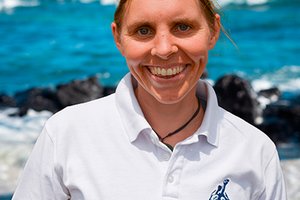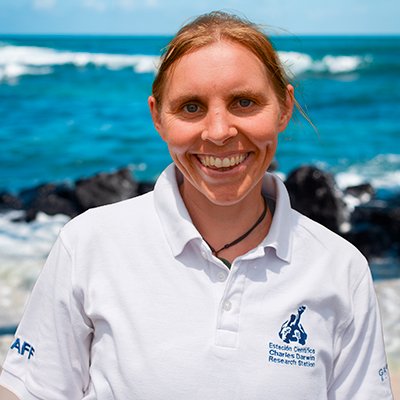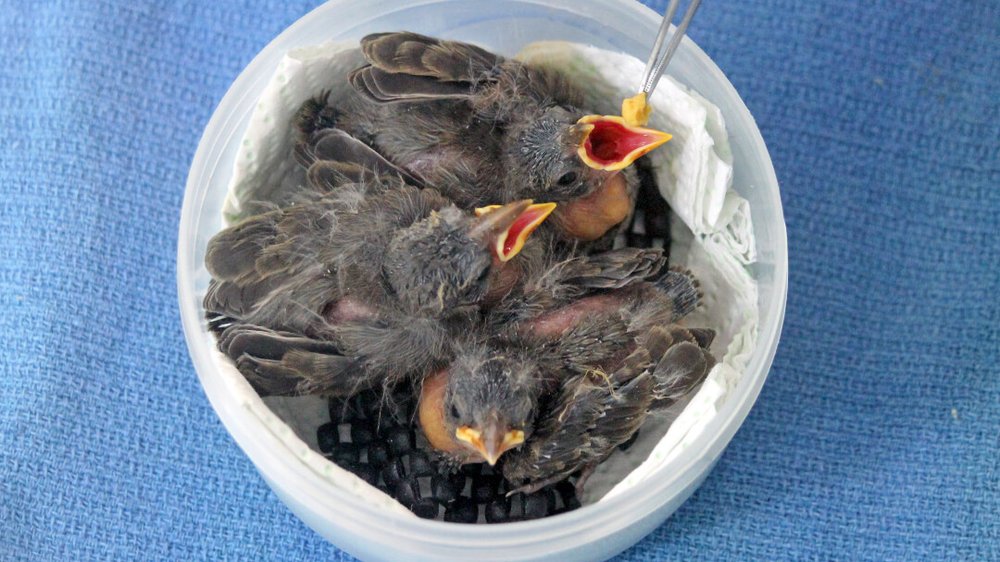
Written in collaboration with .
For the third year running, the rarest of “Darwin's finches” is being captive-reared at the Charles Darwin Research Station (CDRS), the operating arm of the Charles Darwin Foundation (CDF). The Mangrove Finch Project team, led by the CDF and the Ministry of Environment via the Galapagos National Park Directorate (GNPD), collected nests and young nestlings of the critically endangered Mangrove Finch (Camarhynchus heliobates) in the wild at Playa Tortuga Negra from February 6 to March 1 for the 2016 head-starting program.
After eight weeks of successful rearing in the laboratories of the Charles Darwin Research Station, fifteen fledglings will return to their place of origin, their natural habitat at Playa Negra Tortuga, which will be monitored by scientists and park rangers to determine their initial survival and contribute to the natural species survival.
With an estimated population of 80-100 individuals, inhabiting just 30ha at two sites on Isabela Island, all wild hatched nestlings during February have a high probability of mortality in their natural habitat due to parasitism by the introduced parasitic fly Philornis downsi. This year local weather conditions were dry and consequently because of low rainfall, Mangrove Finch breeding was slower, with many territories not having nests. These nests are found high in the canopy and rope tree climbing techniques were required to access them.
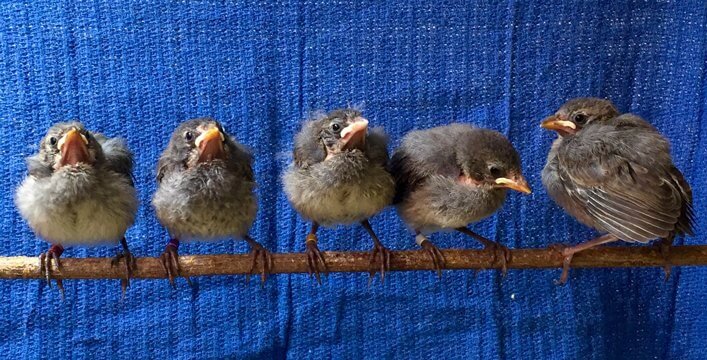
During the collection, hopeful news broke; a chick found near fledging age and older than ideal for head-starting, became the first wild-fledged Mangrove Finch to be observed in February (during the early breeding season) in seven seasons. This may well be due to the team lowering it from the mangroves and removing P. downsi larvae from the chick before returning it to the nest.
Two captive-reared fledglings released in 2014 and 2015 were observed in the wild, with both birds identified by their unique color bands. This is very positive news for the project as until now no captive-reared fledglings observations made three months following their release. The cryptic nature of juvenile and non-breeding mangrove finches means that obtaining reliable sightings of young individual birds in the wild is rare. The two year old fledging responded to a woodpecker finch playback tape of a collaborating scientist with a mangrove finch call and flew into the mist net, where it was carefully removed and released. The one year old fledging was observed foraging at the forest’s edge.
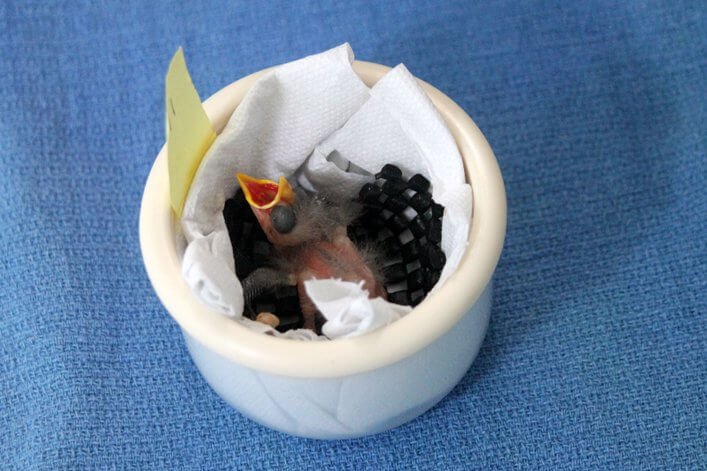
In total, eight nests were collected and fifteen eggs – along with four young nestlings – were transferred to Puerto Ayora on three separate occasions (February 13, 23, 29). The first eggs and four young nestlings arrived at the captive rearing facility at CDRS on February 16 and the very next day the first eggs hatched in captivity, later fledging on March 4. The first chick, brought back from the wild as small nestling, fledged on February 23. This was the first mangrove finch chick to fledge in captivity for the 2016 season. Both hatchability of eggs and chick survival in captivity have been high.
Mangrove Finch Project leader, Francesca Cunninghame says,: "It has been very rewarding to conduct head-starting of the critically endangered mangrove finch for the third season running working closely with both local and international partners and collaborators. Although climatic conditions were dry and fewer pairs were nesting than anticipated, we were still able to collect sufficient nests to provide us with a good number of chicks to raise, while the birds are able to re-nest in the wild and rear their own young. Even better was finally obtaining wild sightings of two fledglings hand-reared in previous years, with this observation we can be sure that our efforts are producing juveniles capable of surviving in the wild and our goal of boosting the population of the rarest bird in the Galapagos can most likely be achieved through head-starting".
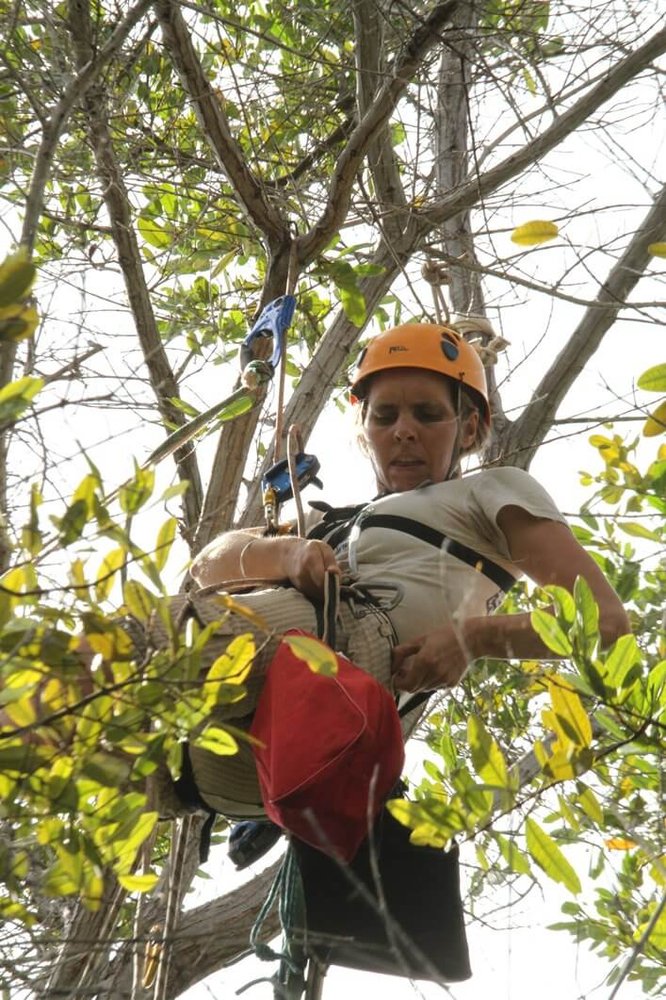
Artificial incubation and hand-rearing of the critically endangered mangrove finch is led by project collaborators San Diego Zoo Global (SDZG). Eggs and chicks are kept in a specially designed room under quarantine conditions to ensure that they do not come into contact with any avian diseases present in Puerto Ayora that are not present in the wild mangrove finch population. Captive chicks are fed on a diet developed for insectivorous passerines and adapted to products available in Galapagos, such as papaya and invasive wasp nests. For the first 15 days they are fed every hour from 6am until 8pm.
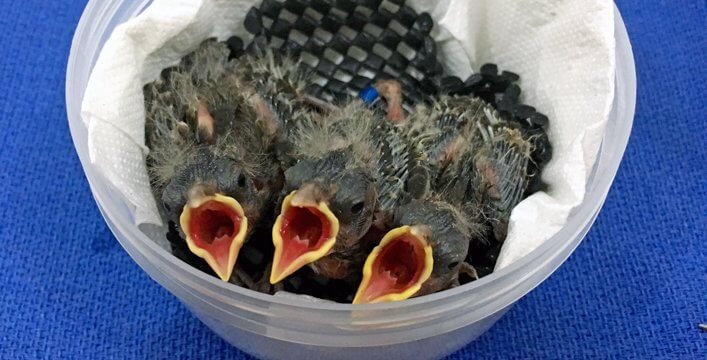
Mangrove finch eggs take 15 days to complete incubation and hatch, while chickstake between 16 – 19 days from hatching to fledging (leaving the nest and flying).
Project collaborator from SDZG, Beau Parks, comments: "We're excited to be back in Galapagos working with the Mangrove Finch head-starting project for a third year. It's incredibly rewarding for Ann and I to be able to share the experience that we've gained in our years of raising birds at the San Diego Zoo's Avian Propagation Center and to put what we've learned to work to prevent the extinction of the Mangrove Finch”.

Special thanks from the project team to the support of Metropolitan Touring, Linblad Expeditions and Galatour S.A. for transferring Mangrove Finch eggs and chicks from North Western Isabela to Santa Cruz.
The Mangrove Finch Project is a bi-institutional project carried out by the Charles Darwin Foundation and Galapagos National Park Directorate in collaboration with San Diego Zoo Global and Durrell Wildlife Conservation Trust. The project is supported by Galapagos Conservation Trust, The Leona M. and Harry B. Helmsley Charitable Trust, The Swiss Friends of Galapagos, as well as several individual donors.
Become an official supporter of the Mangrove Finch Project
More information
Mangrove Finch Conservation Project Page
A Darwin Finch, Crucial to Idea of Evolution, Fights for Survival




